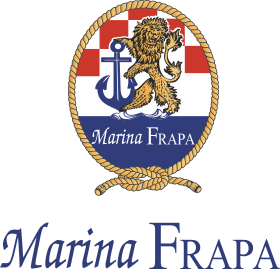Rogoznica
Rogoznica is a village and port in the bay of the same name 25 km south of Sibenik. Inhabited in ancient times. The parish church was built in 1615, in the 19th century. century rebuilt. At the top of the settlement are the remains of a fortress built by the French in 1809. The center of Rogoznica sits on a peninsula whose old stone houses are maintained, giving the waterfront an authentic Mediterranean atmosphere. The pine-covered peninsula is ideal for walking and other types of recreation.
The first foreign visitors found Rogoznica to be a desirable tourist destination at the very beginning of the twentieth century, when the first hotel, called “Rogoznica,” was opened by the Lušić-Rankov family. Austrian and Italian senior military officers and tourists from Austria and the Czech Republic gladly stayed there.
Cape Planka
Two kilometres south-east from Rogoznica there is a Cape Planka which is the most outstretched part of the eastern coast of the Adriatic Sea, and it is a geographical and climate divider of the north and south Adriatic. It is a place of strong north and south collision of wind, cyclones and anticyclones, and sea currents. The largest waves of the Adriatic Sea crash there and on the other hand the sea is as calm as you could possibly imagine. It all creates a stunning natural spectacle which noone should miss because you can neither see nor experience similar things anywhere in the world.
This cape dramatically affects the weather conditions in Dalmatia, especially in Rogoznica where, because of its impact during the three summer months, the rainfall is only 60 mm/month, almost three times less than in the neighbouring cities of Split and Šibenik.
Cape Planka and its mood was first mentioned in the oldest preserved descriptions of the eastern Adriatic coast. It was known to Greek sailors under the name of Diomede’s Cape in the 6th century BC. Homerus in his work ‘Iliad’ reveals that after the Trojan war Diomedes himself, who was one of the greatest heroes of Greek mythology, sailed around it, and Timaeus, a Greek historian, already in 4 century BC described the unusual natural anomaly which it causes. His description of weather conditions over the Diomede’s Cape belongs to the oldest descriptions of a meteorology phenomena in the European culture. Also a Greek scholar, geographer, astronomer and mathematician Eratosthenes wrote about Diomede’s Cape in the 3rd century BC, an important epic poem about the Argonauts took place there, and in the 1st century it was mentioned by Pliny the Elder in ‘Natualis Historia’, the first encyclopedic work of European culture.
One of the miracles attributed to the Christian saint John, the bishop of Trogir from the 11th century is related to Cape Planka. According to the legend, after the shipwreck by Cape Planka he walked on the waves and saved the lives of King Coleman and all the sailors. In memory of him and his miracles, at this place a votive church was built in 1324.
Marina Frapa





